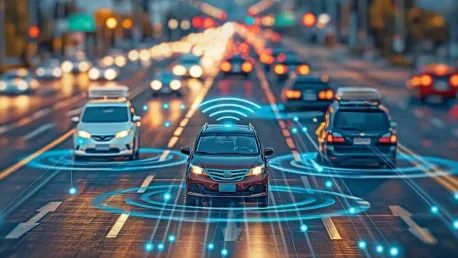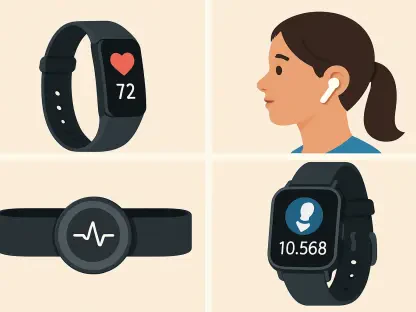Viasat is making bold strides in the Non-Terrestrial Network (NTN) market, focusing on three high-potential use cases: direct-to-consumer, industrial IoT, and connected car applications. The increasing demand for ubiquitous connectivity and enhanced communication capabilities drives the potential for these innovative technologies to reshape the market. As Viasat navigates this complex landscape, it faces both significant opportunities and technical challenges that could determine the future of satellite-based cellular services.
Viasat’s Strategic Pursuits in the NB-NTN Market
Direct-to-Consumer Potential
The direct-to-consumer market is seeing considerable growth with innovations in satellite-based connectivity. Viasat stands to leverage this by enabling seamless connections through regular smartphones. This segment has attracted immense attention due to its potential to provide reliable connectivity in remote and underserved areas, where traditional cellular networks often fall short. By focusing on direct-to-consumer applications, Viasat aims to bridge the digital divide and offer a robust alternative solution powered by satellite technology.
One of the most promising aspects of Viasat’s direct-to-consumer strategy is the development of companion devices. These devices, equipped with high-gain antennas and modems, are designed to work alongside existing smartphones, providing dependable SMS, chat, voice, and email services. Demonstrated at the Mobile World Congress, these companion devices have shown considerable promise in enhancing connectivity for users in isolated locations. They offer an intermediary solution for consumers who are not ready to upgrade their smartphones but still need reliable satellite connectivity, thus creating a substantial market with immediate service expansion possibilities.
The growing demand for seamless connectivity across diverse geographies means that Viasat’s companion devices could play a crucial role in expanding the company’s market reach. These devices cater to a segment that seeks enhanced satellite service without the immediate financial commitment of smartphone upgrades. As smartphone upgrade cycles extend, these companion devices present an invaluable option for consumers, allowing Viasat to tap into an evolving market landscape and address the connectivity needs of remote users effectively.
The Promise of Industrial IoT
Industrial IoT is emerging as a key area for NB-NTN applications. A Viasat survey highlighted the persistent connectivity challenges faced by businesses, an issue that satellite solutions can effectively address. The limitations of terrestrial networks in reaching remote and rugged environments underscore the importance of satellite technology in providing consistent and reliable connectivity for industrial IoT applications.
The potential to lower user terminal costs dramatically through NB-NTN technology is a compelling factor driving adoption within the industrial sector. By reducing the economic barrier to entry, Viasat’s satellite solutions make large-scale IoT deployments more feasible and scalable for various industries. The cost-effectiveness of these solutions is particularly appealing for sectors that rely heavily on asset management and tracking, where traditional connectivity options may not be viable.
In practical terms, the application of NB-NTN technology in sectors like cattle tracking serves as a prime example of its transformative impact. Ranchers, who previously faced prohibitive costs in deploying tracking devices for livestock, can now leverage affordable satellite-based solutions to monitor their assets more efficiently. This not only enhances operational management but also opens up new possibilities for improving productivity and decision-making processes. By addressing critical connectivity challenges, Viasat’s NB-NTN solutions make previously untenable industrial IoT applications viable, driving innovation and efficiency across various sectors.
Connected Car Market: A Long-Term Vision
Market Opportunity and Technological Integration
The connected car sector is anticipated to be the most lucrative of Viasat’s target markets. The integration of Rel. 17-capable modems and larger antennas positions this sector for significant development and service expansion. As the automotive industry increasingly moves toward intelligent and autonomous vehicles, the demand for reliable, high-speed connectivity becomes paramount. Viasat’s advancements in satellite technology offer a viable solution to meet these growing connectivity demands.
Ecosystem partnerships will be critical to realizing the potential of the connected car market. Viasat’s collaboration with the 5G Automotive Association and successful trials in Brazil underscore the practical application and potential growth in this market. These partnerships aim to develop and standardize the technologies needed to ensure seamless integration between terrestrial and satellite networks. By working within an ecosystem of industry leaders, Viasat can leverage collective expertise and resources to accelerate the deployment and adoption of connected car solutions.
The technological advancements enabling seamless network switching between satellite and cellular systems will play a crucial role in the growth of the connected car market. Vehicles equipped with advanced antennas and modems can maintain continuous connectivity, ensuring that critical data transmission, real-time navigation, and other in-car services remain uninterrupted even in areas with limited terrestrial coverage. This level of integration and reliability is essential for the future of autonomous vehicles and other advanced automotive applications, positioning Viasat at the forefront of this transformative market.
Navigating the Sales Cycle
Despite its promise, the connected car market involves a longer sales cycle than the other use cases. This extended timeframe is due to the complexity and scale of the automotive industry, where product development, testing, and regulatory approvals take considerable time. As a result, while progress is being made, immediate revenue may be more achievable through direct-to-consumer and industrial IoT applications first.
Understanding the longer sales cycle is crucial for Viasat in strategizing its market approach. The connected car market’s significant revenue potential requires a sustained investment in research, development, and partnership-building activities. Viasat’s ongoing trials and collaborations are foundational steps towards solidifying its presence in this sector. However, the gradual nature of market penetration means that Viasat must balance its focus between quickly deployable solutions, such as companion devices for direct-to-consumer markets, and the more long-term, high-potential opportunities within the connected car segment.
As Viasat navigates this nuanced market landscape, it employs a dual strategy of targeting immediate revenue streams while investing in the future growth of connected car applications. This balanced approach allows Viasat to maintain financial stability and continue innovating, ensuring readiness to capitalize on emerging opportunities as the connected car market reaches maturity.
Trends and Future Outlook
Technical Maturation and Ecosystem Collaboration
The maturation of NB-NTN technology, particularly with Release 17 enhancements, marks a shift from theoretical potential to practical deployment. Progressive enhancements in satellite and cellular integration underline the significant strides being made in the space. Viasat’s focus on the technical maturation of NB-NTN solutions is critical to ensuring the reliability and efficiency necessary for widespread adoption. This transition from theory to practice is what will determine the real-world viability of Viasat’s strategic pursuits.
Collaborative efforts within the ecosystem are vital for overcoming connectivity hurdles and realizing the full potential of these innovations. Successful deployment of NB-NTN services depends heavily on robust partnerships with stakeholders across the telecommunications, technology, and automotive industries. These collaborations aim to build standardized frameworks, share resources, and develop integrated solutions that can be adopted at scale. The collective push toward innovation in connectivity underscores the importance of unified efforts in achieving technological breakthroughs and addressing market needs.
Early Market Discovery
The NB-NTN market is still in its early stages, and insights gained over the coming year regarding user engagement and willingness to pay will shape strategic adjustments necessary for growth. As Viasat continues to explore and understand this nascent market, it will need to gather critical data on user behavior, preferences, and the economic viability of offered solutions. These insights will guide Viasat in refining its products, pricing strategies, and market positioning to better cater to the distinct needs of different user segments.
Viasat’s strategic focus and partnerships highlight its readiness to navigate and capitalize on the evolving NB-NTN landscape, aiming to pioneer future integration and transformation across various sectors. The company’s proactive approach in engaging with early adopters and industry partners positions it advantageously to influence and lead the market’s development. As Viasat collects and analyzes market data, it can make informed decisions to adapt its strategies and enhance its competitive edge, driving sustained growth and innovation in the satellite-based connectivity space.
Conclusion
Viasat is making significant progress in the Non-Terrestrial Network (NTN) sector, with a strong focus on three promising areas: direct-to-consumer services, industrial IoT, and connected car applications. The growing need for constant connectivity and improved communication capabilities is driving these advancements, with the potential for these innovative technologies to transform the market.
Viasat’s direct-to-consumer services aim to provide reliable internet access in remote and underserved areas, addressing the digital divide and enabling a more connected world. The industrial IoT applications involve leveraging satellite connectivity to enhance operational efficiency, safety, and data management across various industries, including agriculture, mining, and logistics. Meanwhile, the connected car applications focus on offering seamless internet access and advanced telematics for vehicles, enhancing navigation, entertainment, and safety features.
As Viasat ventures into this intricate landscape, it encounters both substantial opportunities and complex technical challenges. These challenges include ensuring robust and reliable connectivity, integrating with existing terrestrial networks, and addressing regulatory and spectrum management issues. How Viasat tackles these hurdles will likely play a crucial role in shaping the future of satellite-based cellular services. The company’s ability to innovate and adapt will be key in determining its success in this rapidly evolving market.









